As if to prove the Newton’s third law of physics wrong, the Zero emission vehicles leave behind nothing as they zip forward. A series of eco-friendly, Zero Emission cars were showcased at the Seoul Motor show 2011. The companies who showcased their concept cars at the 2011 Seoul Motor show included Hyundai, Ssangyong, Kia, and Chevrolet among others. While Ssangyong’s showpiece was KEV2, Kia showed off Kia Naimo, Chevrolet had Miray, while Hyundai put forth their Blue 2. Let us have a look into the green features of these eco-cars:
Ssangyong’s KEV2 Concept Car

The main driving force behind the zero emission figures of Ssangyong KEV2 is its capability to burn much less gas per mile as compared to a conventional car. The concept car runs on electric motor instead of a gasoline engine. Aside from these green features, the Ssangyong KEV2 concept has new LED headlights, no (usual)front radiator grille, a modern, luxury interior boasting a Samsung Galaxy tab as the user interface.
Chevrolet Miray Concept

Miray by Chevrolet is fitted with dual 15-kW electric motors, ensuring quick acceleration while reducing emissions to zero. A lot of kinetic energy, which is produced when the car is in motion, is converted to potential energy when brakes are applied. This sporty car smartly uses this energy during braking to charge itself. Miray runs on a 1.6kWh lithium-ion battery. The car is equipped with a 1.5 liter 4-cylinder turbo charged engine.
Kia Naimo electric crossover concept car

The Kia Naimo is the third in the series of concept cars by Kia. The Naimo runs on a 27kWh battery, reaches a top speed of 93 mph and covers a nice 124 Miles on a single charge of 5 hours. The permanent magnet synchronous motor generates an impressive 110hp, and the Lithium-ion-polymer battery, tucked under the hood, can be charged at home without any special connections. Kia Naimo is hugely Masculine, with wrap-around windscreen, dot styled LED, Sun roof which is asymetric.
Hyundai Blue2 concept car

The Hyundai Blue 2 is based on a power packed Hydrogen fuel cell stack, with fuel economy touching 82 mpg of Hydrogen supported by with alloy wheels and low resistant tires to crank up the fuel efficiency. Hyundai Blue 2 offers a great luxury sedan look, streamlined body and the exteriors has a great aesthetic appeal including LED screen panels. The interiors completes the futuristic concept wherein the car knows when the driver is near and opens the doors for him! What more, the car’s interior has state-of-the-art ioninzing system for fresh air while the side mirrors are cameras, making the driver feel like James Bond, 007.

What’s happening right now?
Previously when we had talked about transportation, it was about the private side of affairs. But what about the massive public transit systems co-existing with the severely cramped and congested environments of our cities? The modern economy is bound by the threads of communication, and public transportation certainly forms a crucial part of it. There is also another side to it which is much so prevalent in the urban fabric of developing countries. In these cases the quality of living for the majority is not so high, so as to afford private transportation, and hence public transit systems become all the more important for them. An apt example would be Mumbai’s suburban rail systems carried a total of 6.3 million passengers every day in 2007, which was more than half of the Indian Railways (the fourth largest railway network in the world) daily carrying capacity.
But since the transit systems are built on a massive scale, the level of pollution and emissions emanated also tend to be high in magnitude. Instigated by such situations, designers, urban planners and researchers are looking forth to integrate zero-emission public transportation for a sustainable future ahead. And judging by the trends, they have certainly progressed in the right direction.
Trends:
1. Proterra electric bus:

A collaborative effort by the companies Proterra and Altair Nanotechnologies, the all-electric Proterra bus is a bus with a clear and convenient difference. Other than having zero emission mode, the bus also incorporates a super-fast charging capability on its rooftop, in the form of Altair-nano batteries. The bus has a capacity for 68 people, and MPG equivalent of 18 and 29 miles per gallon diesel fuel equivalent (5 times more fuel efficient than conventional buses).
2. Volkswagen Milano Taxi:

A zero emission ride from the German auto giant Volkswagen in the form of a compact taxi, and this time it will spurt through the gorgeous albeit congested streets of Milan. The petite taxi with a length of 3.73m will be powered by an electric motor. And its comparatively spacious interiors will emanate a modernistic ambiance by a plethora of features such as a touchscreen, temperature control, internet connection and even credit card transaction facility.
3. Aero Train- Zero emission:

Is it a bird, is it a train? No, it is the all new and revolutionary Aero Train concept. It may look like the futuristic version of those magnetic levitation trains, but while it will travel with speeds in excess of 500kph (with an altitude of 10 cm), the mechanical complexity and expensive tracks of magnetic levitation would be nullified in this conception. Also the concept is promoted to be a fuel efficient, noise efficient - zero emission train.
4. TAKHT LAHORI - zero-emission bus:

One of the entries for “My City” scholarship competition of Instituto Europeo di Design’s School of Transportation Design, this wondrous conception was put forth by designer Ali Murtaza to counter the effects of congestion in Lahore. The bus will incorporate in-wheel motors powered by lithium-ion batteries. The batteries in turn would either utilize solar panels or normal A/C outlet, while the bus will integrate an advanced safety feature in the form of an “Active Bumper” that can provide air bags at critical zones.
5. Setra Coach – Zero emission public transportation:

Designer Peter Spriggs has come up with a zero emission mode of public transportation fused with dollops of conscientiousness. The Setra 700 Series vehicle has a 225kw zero emission electric motor of 400bhp, powered by lithium-ion batteries, but on the practical side it has been specifically conceived for differently enabled people.
6. Hypersonic The Airstream Train:

A concept that imbibes the futuristic confluence of Hovercraft and Train Technology; the Airstream train will use a Scramjet engine that is touted to reach an exhilarating speed of 10 Mach (though the train itself will travel at a speed of around 472km/h), while it will be fuel efficient and noiseless at the same time.
7. Sustainable Maglev Public Transport System:

Based on the recent advancements made in the system of Maglev (magnetic levitation) transportation, industrial designer Chris Hanley has contrived a zero emission transit system, whose tracks will be suspended above main roads and streets of major cities. This new network would utilize skyscrapers as stations, in effect totally countering the road congestion and traffic. The contraption will also feature 360 degrees mechanism, while its “wings” will connect to the “hanging” track, keeping the cabins free from offsets.
8. “Credo E-Bone” Eco Concept for Public Transport:

Don’t let the bizarre name get to you, but “Credo E-Bone” is one hell of an advanced conception. This bus will be uniquely powered by hydrogen fuel cells and additionally by lithium-ion batteries integrated on its roof. Moreover, the bus will be composed of ultra-light composite plastic, making it more energy efficient on the long run.
9. AutoTram – Future Public Transportation:

Now we see a confluence of bus and tram in the form of this remarkable design known as the AutoTram from the Fraunhofer research team. This innovative system will not utilize tracks and overhead wires as conventional trams do, but would rather exhibit a set of wheels that will run on a demarcated white line. The bus-tram will incorporate a sturdy electric engine, powered by lithium-ion batteries. It will also have super-capacitors for reduction of recharging time.
10. Biway – All-Electric Buses Combine To Form A Train:

And finally we witness the interesting fusion of our familiar bus and train. An entry for the Michelin Challenge Design 2010, the “Biway” is a concept from designers Aleshina Ekaterina and Kamyshev Vitaly. Basically the system can be divided into two components. The first component includes an all electric bus, while the second component combines the buses to form a singular train that runs on a specially designed fiber freeway. The “train” can recharge itself on connection with this freeway. Overall the design looks forth to simplify the transit system by adopting a nigh modular pattern, where passengers can easily switch their buses without any concern for their ultimate destination.
The concept:
All of the above conceptions can be categorized under zero emission vehicles (ZEV), and by definition ZEV is a vehicle that emits no tailpipe pollutants from the onboard source of power. Henceforth the total system of public transit can go through a “green” metamorphosis, and at same time be fuel efficient.
The advantages:
As already mentioned, we are surely looking at a much reduced level of pollution and emissions in the future, if such conscientious conceptions come to be realized. Furthermore, the positive effect on the economy, cost effectiveness of transportation and most importantly the provision of convenient rides to the public can certainly prove to be beneficial in the long run.
The impact:
Public transit system has always been a major part of our contemporary economic infrastructure (especially in developing countries). Now if this crucial component of our economy advances along a pollution-free, zero emission direction, the total assimilation of sustainability occurs on a massive scale. In effect, an ordinary citizen can play his/her part in the “green” race toward a clean and sustainable future.

While on the move, what if any of your gadgets, such as a phone, laptop or iPod, run out of energy? Since it’s not always possible to carry a charger everywhere you go, what one can do wait for a power supply nearby. So, if such a situation arises, you can’t do much but wait till you get back home to pump life into your gadgets. But Revolution designed by Carl McGreavy is here to change this theory. Revolution is a self recharging digital camera which will get all the powers to function by a Dynamo.
The exceptional camera will exploit a series of gears to make this possible. When someone using it turns around the dynamo by spinning the camera with their fingers, it gets charged. This extra charge allows capturing a few more moments. The shape of the camera is high on functionality. The camera can be rotated without difficulty owing to the perfectly placed ring. As all the weighty components have been shifted to the right side, it gives the camera a pendulum like effect. Revolution comes in six charge ring colors and eight different case colors. So, one can easily mix and match to get a camera according to his/her taste.
Revolution will make sure that you don’t miss on capturing any moments that life has to offer just because of a low battery life!
[Cheers Carl]
Designer Ed Chew takes a green step in the right direction with the TetraBox lamp, a light object made from discarded drink packets that would have otherwise ended up in landfills already packed to the brim. The design is achieved by unfolding the packets and refolding them into hexagonal and pentagonal sections that are then pieced together to form a geodesic sphere or any other desired shape. Here, the Epcot-like ball makes an attractive overhead light and casts an impressive web of shadows and shapes on the surrounding space.
Designer: Ed Chew





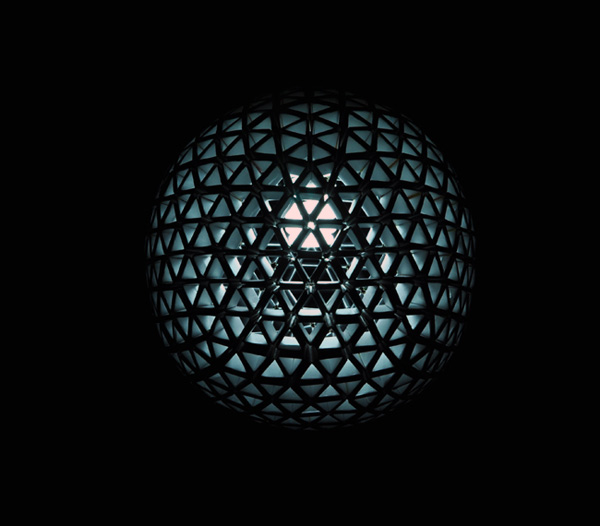

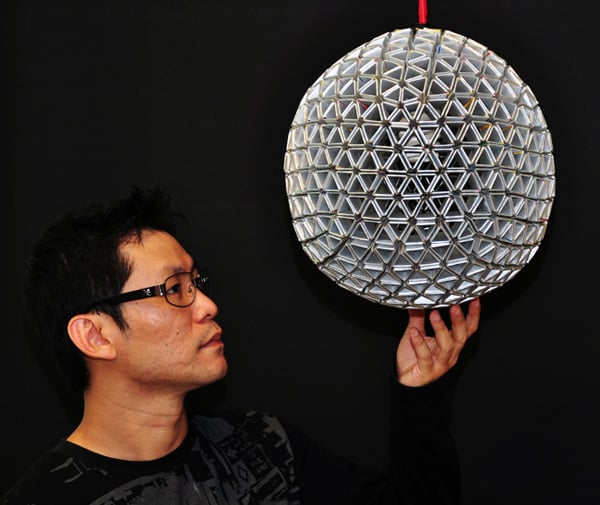




----------
Yanko Design
Timeless Designs - Explore wonderful concepts from around the world!
Yanko Design Store - We are about more than just concepts. See what's hot at the YD Store!
This new collection of suspended LED lamps by Integral Studio Vinaccia utilize an overlay of hard wooden slats to create volume and soft familiar shapes. A cloud of wood blades form the Cumulus lamp as it seemingly floats while spreading soft light and the Frame lamp’s wood slats hold an interchangeable central screen that casts elaborate shadows on the surrounding space. The entire collection is available in natural wood, or painted white or black.
Designer: Giulio & Valerio Vinaccia

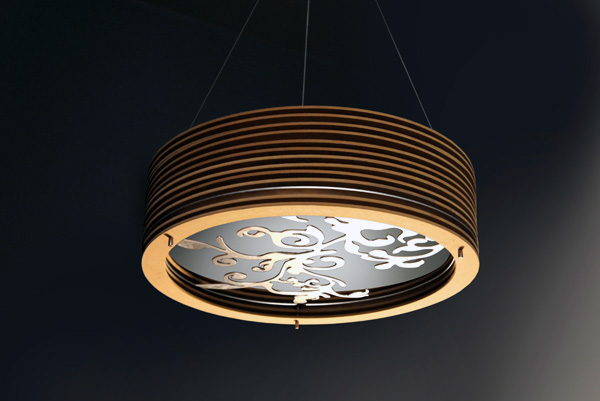
----------
Yanko Design
Timeless Designs - Explore wonderful concepts from around the world!
Yanko Design Store - We are about more than just concepts. See what's hot at the YD Store!

Building homes from mud is an age old way of constructing safe warm homes from very little. This new Hydraulic Compressor By MecoConcept can create a solid compact brick from mud in around 30 seconds. Each brick from the compressor has a LEGO brick like appearance helping it to be used with ease to quickly build houses even in disaster struck areas.
The MecoPress is a hydraulic compressed earth brick press that can be used to produce compact and solid mud bricks. Materials like local soil, clay and silt are used mainly to form each brick, usually with something like cement added to help bind each brick. Because the press can create a brick in around 30 seconds you can quickly gain enough bricks to form a simple structure. Due to the bricks shape they are easily put together to form a building. The press can potentially be powered from solar energy, making it additionally useful for those in disaster struck areas.
By making use of local materials these bricks can be created just about anywhere, and as they are from a natural sustainable source they can be used without a hugely detrimental effect to the environment. Using mud bricks for building homes can have benefits, they are good at keeping heat in during cold months and keeping it out during the hotter months, helping to keep people comfortable without the need for huge heating bills. This makes it a good choice as a construction material for eco-friendly housing projects.
The press for creating the bricks allows you to know each brick is sound, that it is of a high quality and nicely compressed. It can help those in areas in need of quick housing who maybe lack other building materials while also being of use to those wishing to construct an eco-house.
Source: iGreenSpot
Want to buy this gadget? Check out the Mud Bricks By MecoConcept article on EnviroGadget to see the lowest prices for this gadget.
© 2008 to 2011 EnviroGadget.com. You can now keep up with the latest eco-gadgets on the EnviroGadget Facebook page. Why not help us to spread the word?
Related posts:
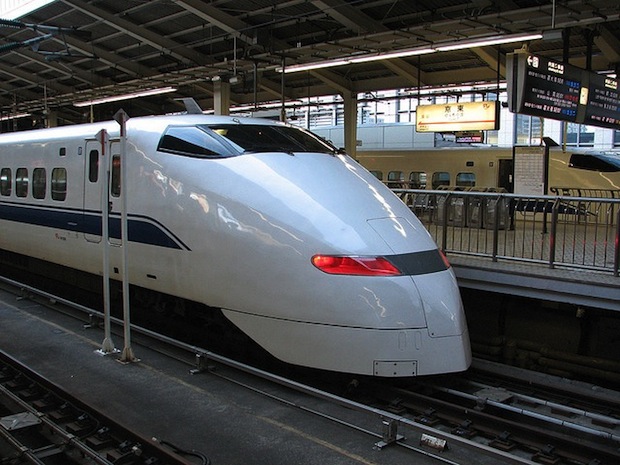
Since the elections in November, newly elected Republican governors have been falling over themselves to return federal funding earmarked for high-speed rail. Their rationale is that once the rail project is built, the state will be the one bearing the operating cost while the trains lose money because no one is riding them. A new report says that this strategy is going to backfire: High-speed rail can be a huge driver of jobs and economic growth, and the government has already committed to at least $10 billion worth of spending, with plans for tens of billions more in the coming years.
The report, "The Case for Business Investment in High-Speed and Intercity Passenger Rail" (PDF) by the American Public Transportation Association finds that in addition to the obvious, but temporary, construction jobs, the benefits ripple out throughout an economy. Most importantly, for each $1 billion spent on train construction, 24,000 permanent jobs are created. That's a mere $41,667 per job, which looks downright cheap when you're staring down 9% unemployment.
The California High-Speed Rail Authority estimates that building a high-speed rail link between L.A. and San Francisco would result in 600,000 construction jobs and 450,000 permanent new jobs. There are currently 2.2 million unemployed people in the state; high-speed rail would halve its unemployment rate. Here is how high-speed rail would affect some major American cities, to the tune of billions of dollars in economic growth and new wages:

The concern with high-speed rail, as explained by the governors in states like Wisconsin and Florida is that no one will ride it. And while rail ridership is at an all-time high, it's a fair worry. Amtrak has trouble making ends meet. But what they're forgetting is that people don't want to ride trains not because they hate trains, but because trains aren't that fast. If you make the trains faster, people will ride them. Here is what happened in Europe when they added high-speed rail:

Shocking, yes, but if you spend the money to make the train more convenient, more people will pay to ride on it! And its not as if we really need to push that hard. In the crowded Northeast Corridor (the perfect place for high-speed rail), 62% of the people choosing between taking a train or a plane from Washington, D.C. to New York pick the train, as do 47% of Boston to New York travelers. And the people who choose the train instead of driving would decrease wear on the roads, resulting in $270 billion in road repair savings by 2050. That pays for the trains right there. And lest we forget the environmental benefits, remember, trains are the most efficient mode of passenger movement, especially high-speed ones:

Better for the bottom line, better for the environment. Plus, you're not stuck in traffic and your friendly TSA agent doesn't have to touch you in your special place before you get on.
Follow Fast Company on Twitter. Morgan Clendaniel can be reached by email or on Twitter.
[Photo by Flickr user danielfoster437]
“Look at the figures in Spain after introducing high-speed trains the traveller numbers grew by 30-70% depending on the track. They are convenient and well equiped for business travel with wifi and electricity plugs”
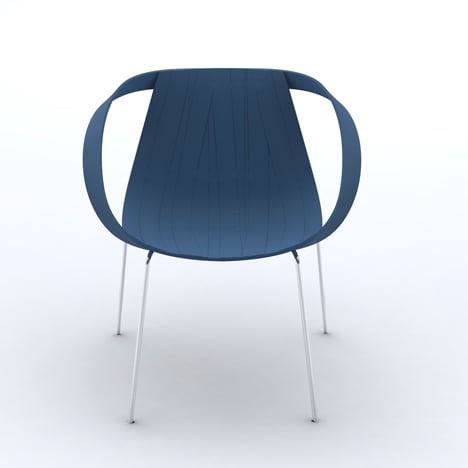
Milan 2011: London studio Doshi Levien will present this injection-moulded wooden chair for Italian brand Moroso at the Salone Internazionale del Mobile in Milan next week. (more…)
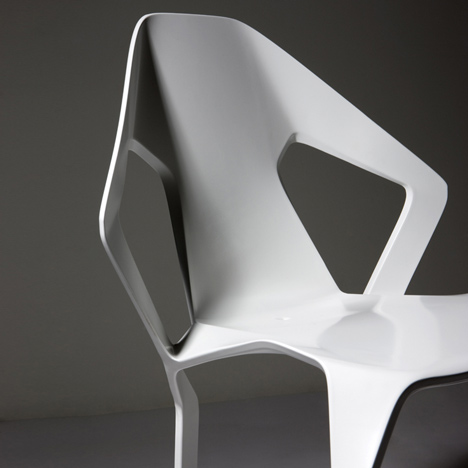
Milan 2011: Dutch architects UNStudio will present this angular white plastic chair at the Salone Internazionale del Mobile in Milan this week. (more…)
 All images credit Lawrence Livermore National Laboratory; click here for full size
It was déjà vu all over again when Brian showed the Lawrence Livermore National Laboratory graph of Estimated US Energy Use recently. Mike showed an earlier version four years ago that I spent quite a lot of time staring at and thin... Read the full story on TreeHugger
All images credit Lawrence Livermore National Laboratory; click here for full size
It was déjà vu all over again when Brian showed the Lawrence Livermore National Laboratory graph of Estimated US Energy Use recently. Mike showed an earlier version four years ago that I spent quite a lot of time staring at and thin... Read the full story on TreeHugger
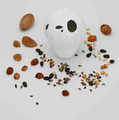


Comments by our Users
Be the first to write a comment for this item.